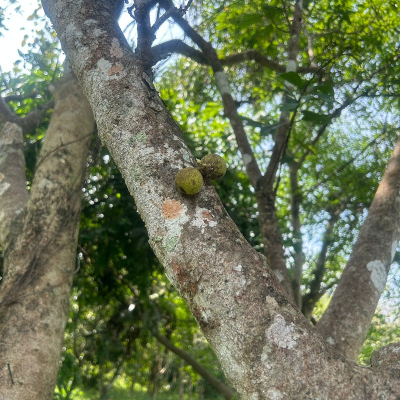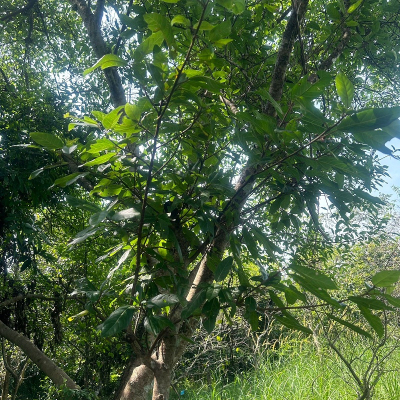Ficus hispida Linn.f.
Family : Moraceae
Parts Used : Fruit , Leaf , Bark
Vernacular Names :-
| English | : | Ficus |
| Malayalam | : | Kattathi, Erumanakku, Parakam |
| Hindi | : | Gobla, Katguleriya |
| Sanskrit | : | Kakodumbarika, Malayu |
| Assamese | : | Khosadumar |
| Bengali | : | Rambal |
| Gujarathi | : | Dhedumaro, Jangliangir |
| Kannada | : | Kaduatti |
| Tamil | : | Peyatti, Conatti, Kattatti |
| Telungu | : | Adaviatti |
Distribution and Habitat: Found throughout India.
Botany: A moderate-sized weak tree generally with hollow internodes, hispid parts, rough grey bark and with out aerial root
- Leaves: Opposite, 10-30 cm long, surfaces scabrid, pubescent, 3-5 ribbed, secondary nerves regular and straight
- Fruit: Receptacles fascicled on the stem or leafless branchlets obovoid or turbinate, hispid, yellow when ripe.
Properties: Emetic, laxative, tonic, galactogenic, purgative, and emetic.
Chemical constituents: Leaves contain hispidin, oleanolic acid, bergaptine, β-amyrine, and β-sitosterol. Stem and leaves contain norisoprenoid ficustriol, 6-O-methyltylophorinidine and 2-demethoxytylophorine, biphenylhexahydroindolizine hispidine. Bark contains lupeol acetate, β-amyrine acetate, β-sitosterol and acetates of n-triacontanol, β-amyrin and gluanol. Fruit contains linalool, linalool oxide, terpeneol, and 2,6-dimethyl-1,7-octadiene-3,6-diol.
Uses: It is used in ulcers, leucoderma, psoriasis, jaundice, inflammations, and intermittent fevers
Propagation: It can be propagated by seeds.




